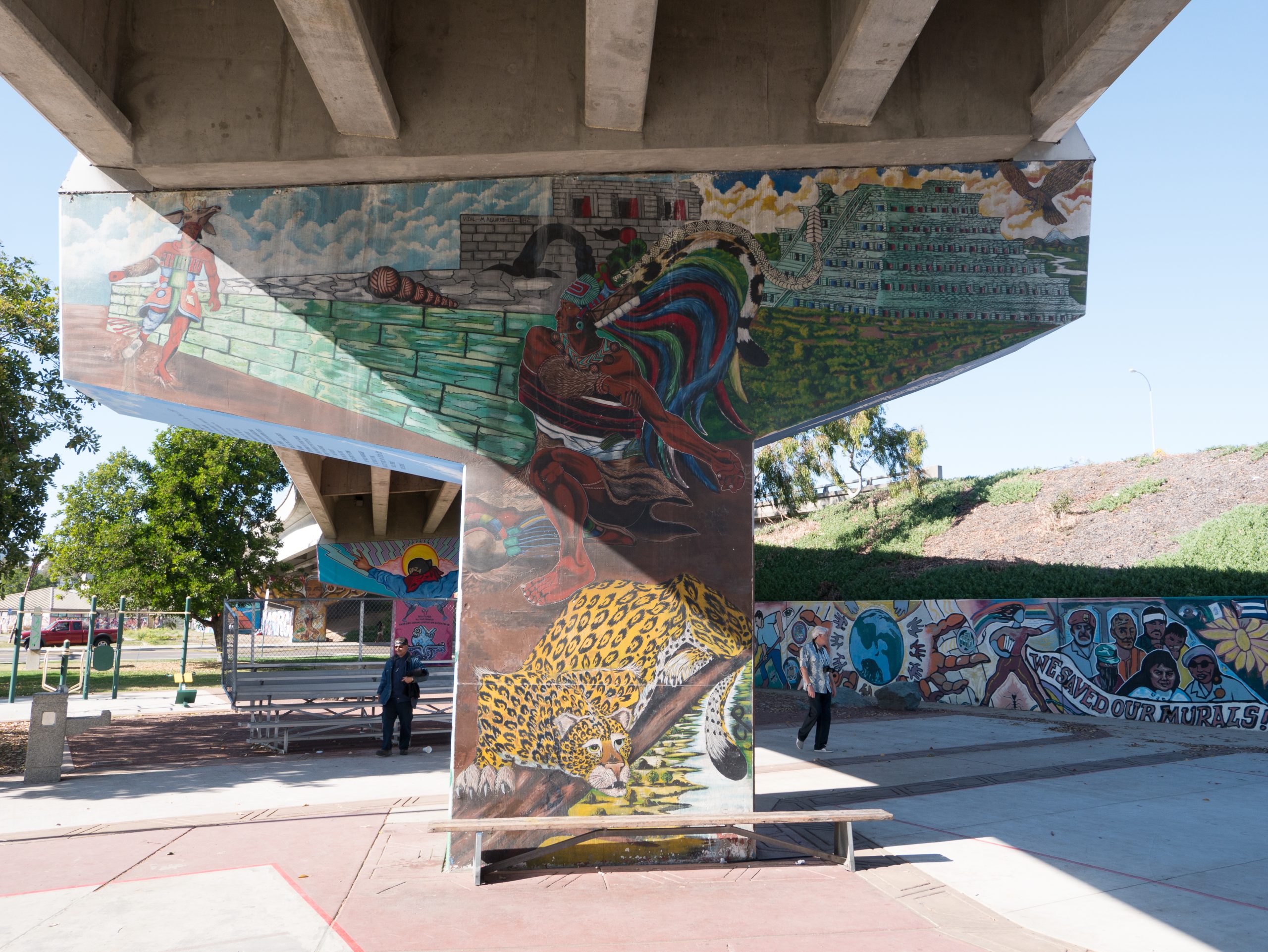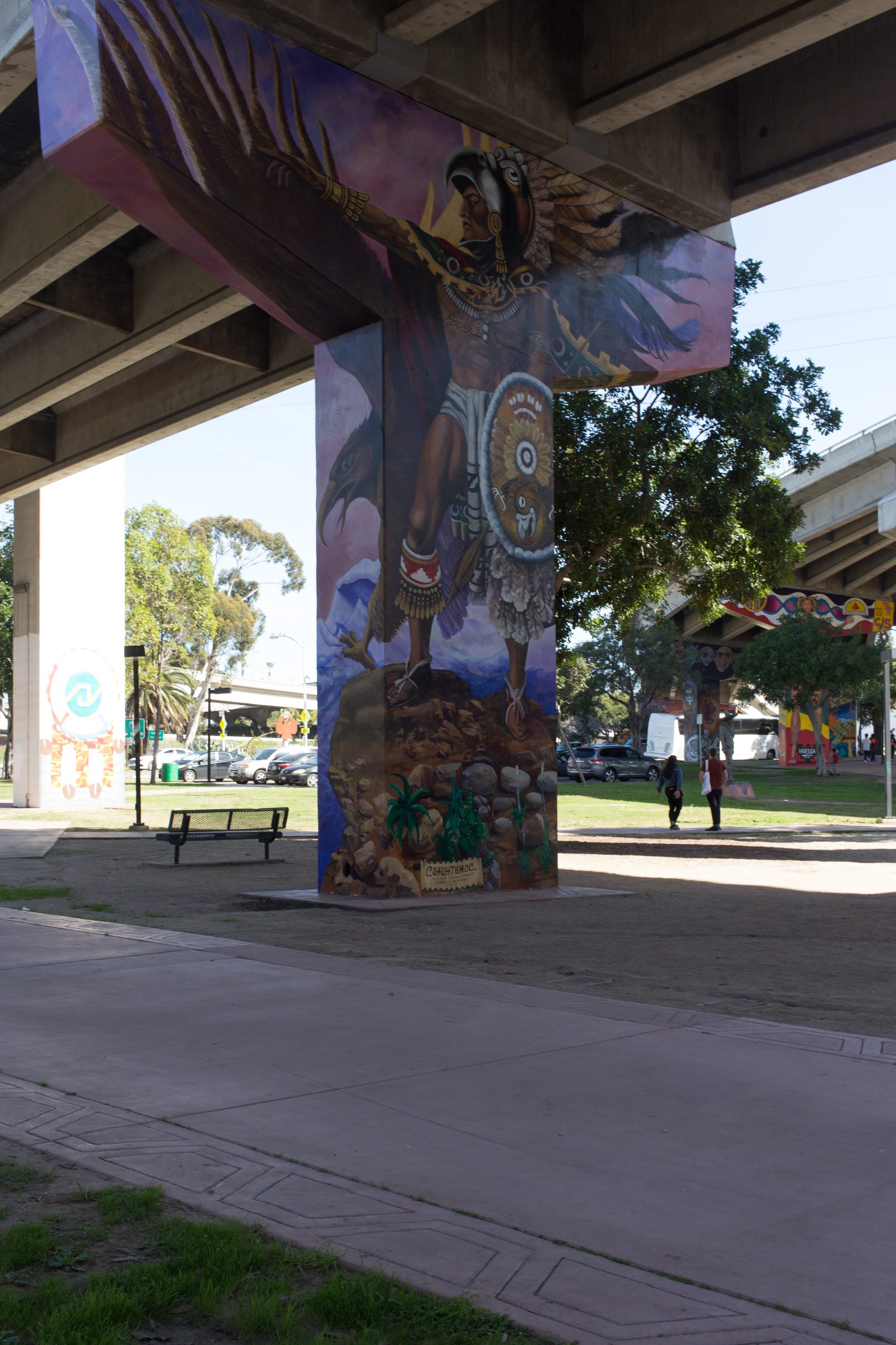Chicano Park: Culturally Reclaiming Urban Spaces
Megan Blanchard
Preface: My name is Megan Blanchard, and my portfolio project is titled “Chicano Park: Culturally Reclaiming Urban Spaces.” I am using the CC BY-NC (Attribution Non-Commercial) license.
Introduction: The art of Chicano Park tells an important story about hardship and reclaiming urban spaces. The conversion of a desolate urban space into a culturally rich green space is a triumph and gives an important message about the indomitable nature of the human spirit. When people come together under a common goal, there is no limit to what they can accomplish.

Chicano Park, named so for its many murals done by Latinx artists, is a park located in the Barrio Logan neighborhood in San Diego under the San Diego-Coronado Bay Bridge that connects to Interstate 5. It came to be when the construction of the aforementioned bridge began, destroying the family homes of residents. This happened because the zoning for the neighborhood was changed from residential to mixed-use, allowing for construction of industrial sites. The area below the bridge pylons was originally going to be used for a highway patrol station, but after a 12-day protest in which the residents of the neighborhood refused to leave the area, the city agreed to let them convert the land into a green space. The first murals were completed by artists from Los Toltecas en Aztlan and El Congreso de Artistas Chicanos en Aztlan in the early 1970s. Over time, many more artists, including ones who lived in Barrio-Logan and those internationally known, painted murals on the 24 support pylons and other concrete surfaces across the park grounds. It became a sort of Mecca; Latinx artists from all over California flocked to the park to leave their mark. The content of these paintings range from portraits of important figures, like Frida Kahlo, to animals, to traditional indigenous patterns and imagery. In December of 2016, Chicano Park was designated as a National Historic Landmark.

The murals in Chicano Park aren’t just there to look beautiful. They represent the hardship and struggle that the members of the Barrio-Logan community went through when they witnessed their homes and green spaces be destroyed by the city. Then, they were promised a park would be built by the highway as compensation for what they lost, and that too was taken away. Only after protests, negotiations, and much uncertainty did Chicano Park come to be. All of this suffering was a direct result of the destruction of nature that comes from industrialization. The little slice of nature that the now-revered park sits on was once completely disregarded and willingly sacrificed by those in power, not caring about the residents of Barrio-Logan.
Although the many murals of Chicano Park do represent the hardships of the residents, they are also exhibitions of the power of reclamation of urban environments and their conversion into green spaces. The community of Barrio-Logan looked at the hand they were dealt and decided to make something beautiful out of it. They looked at the blank pylons with hope. Much can be gained from this perspective. Great things can be accomplished in other urban areas if people came together the way the residents of Barrio-Logan did and choose to see and carry out the potential of their urban spaces.

Nobody could have predicted how influential Chicano Park would become. What started as a protest to reclaim lost land for the community of Barrio-Logan quickly evolved into an international phenomenon and a testament to the human spirit. To make something so beautiful and meaningful out of something in such opposition to anything natural is something uniquely human. Chicano Park is a perfect example of how humans can destroy beautiful things in the name of progress, but also make valuable, important things out of a bad hand. Before the highway, Barrio-Logan was a flourishing neighborhood with green spaces for all to enjoy. Upon construction of the highway, the neighborhood was bisected, the green spaces were destroyed, and the environment was polluted with massive slabs of concrete, highway noise, and fossil fuel gasses. Chicano Park is a masterclass of how to reclaim, restore, and beautify spaces previously lost to industrialization. It is a monument to how we can help heal our homes and our hearts and create value out of things that are usually left to the wayside.
In an increasingly urbanized landscape, it is important for people to reconnect with nature. Many cities do not have green spaces that are accessible to all residents, or their existing green spaces are being destroyed due to situations similar to Chicano Park. Getting in touch with nature is such an important part of being human, and we need to do everything we can to make sure that we continue have access to and create new public green spaces for everyone to enjoy. From small gardens to massive parks, we could all use a little more nature in our lives.

